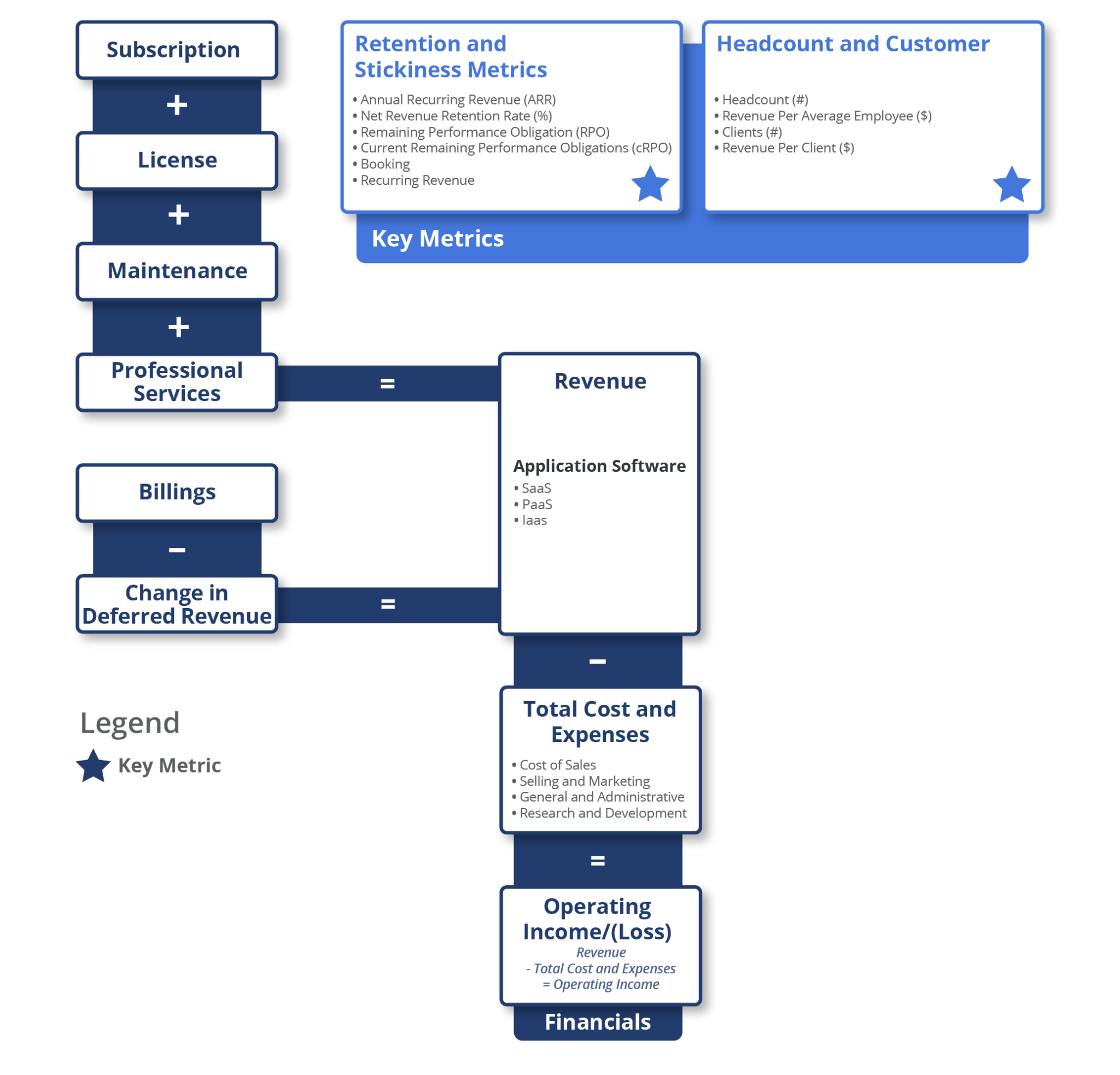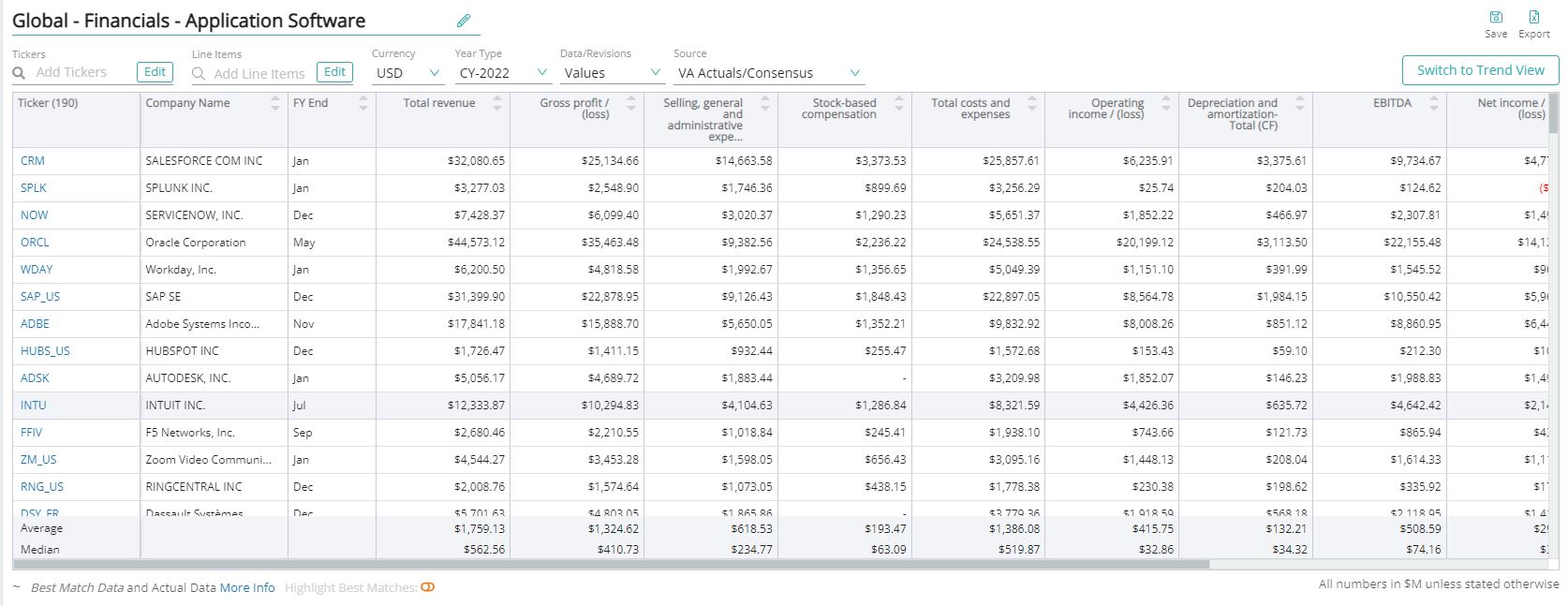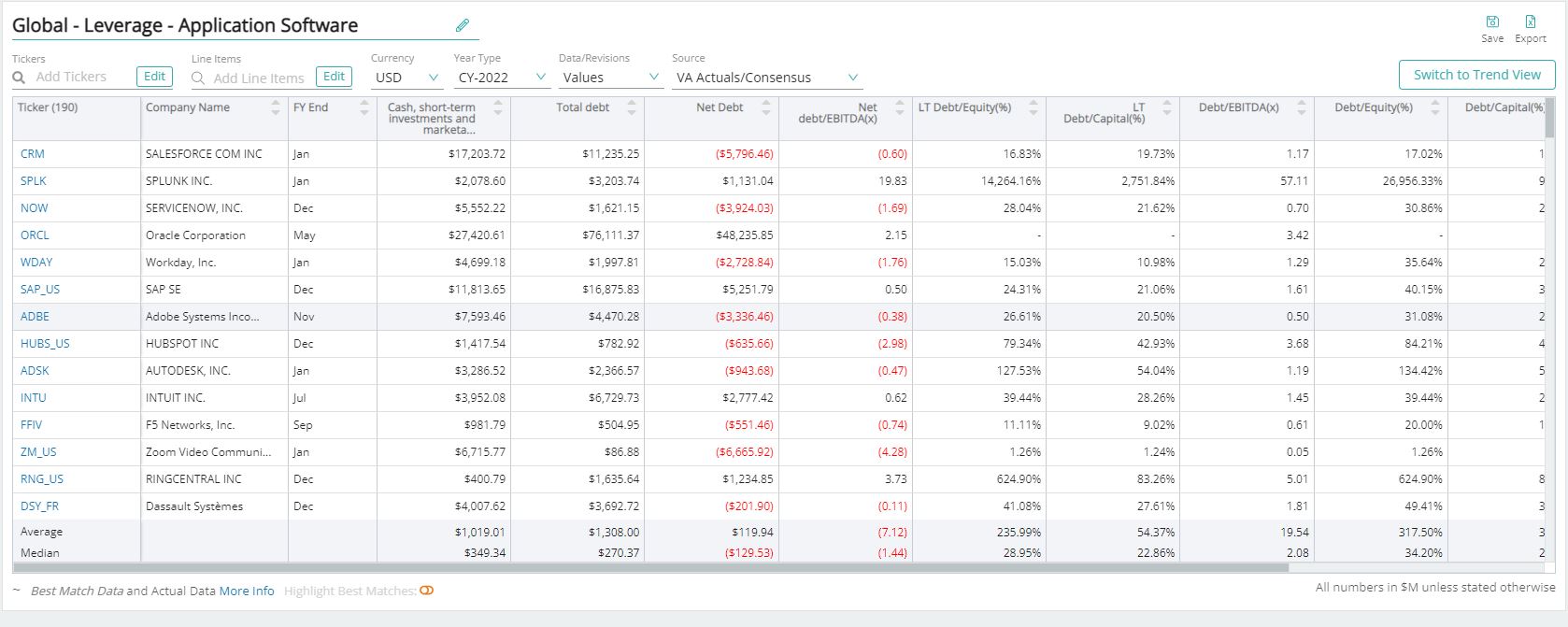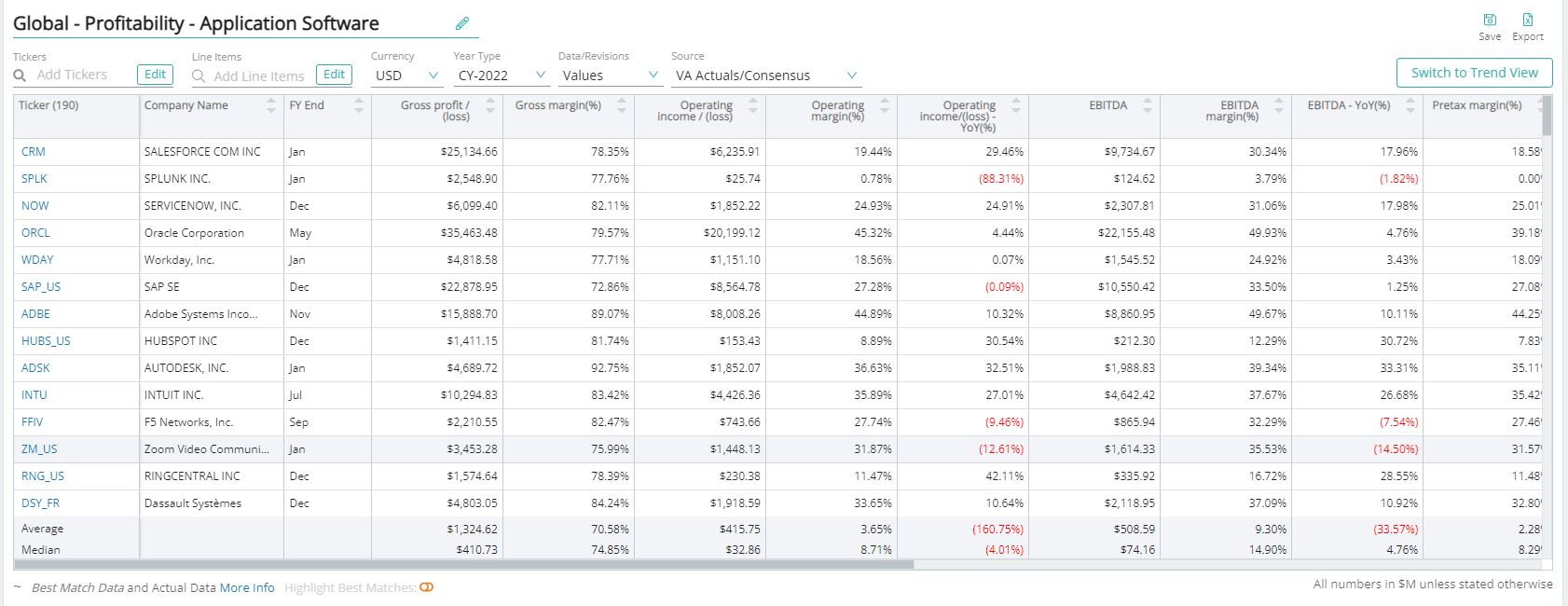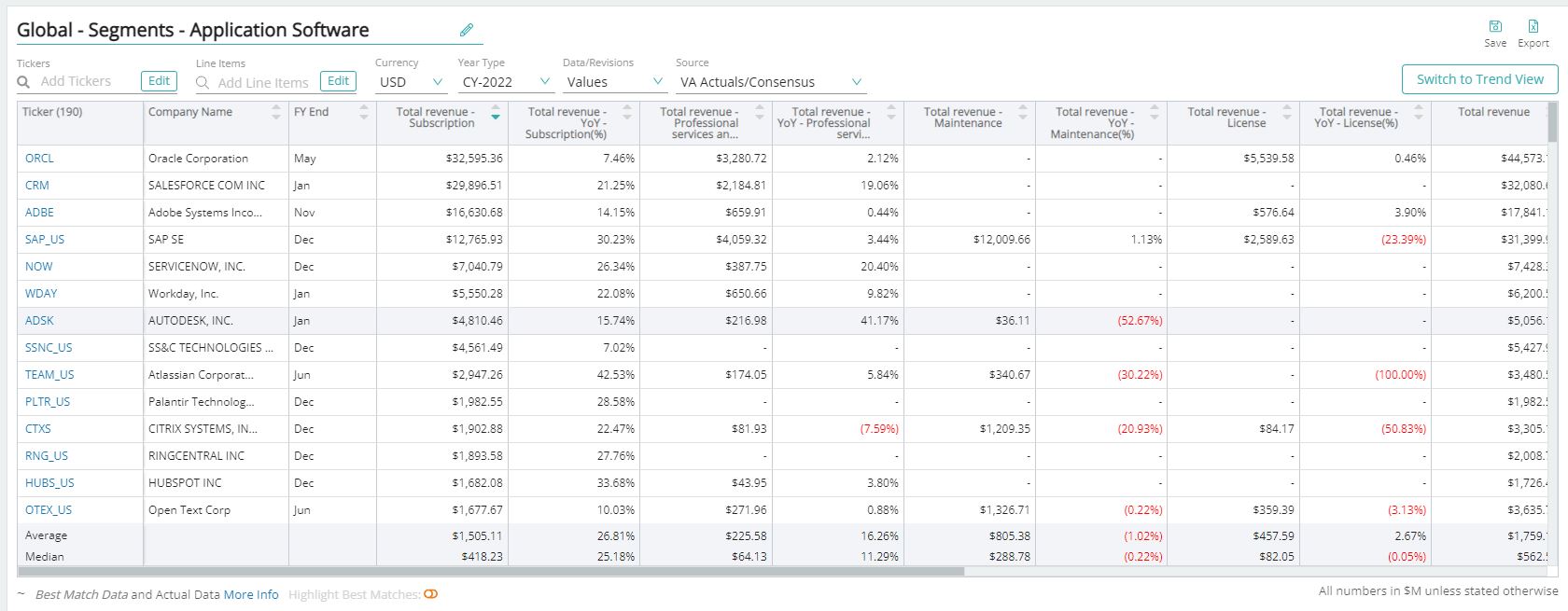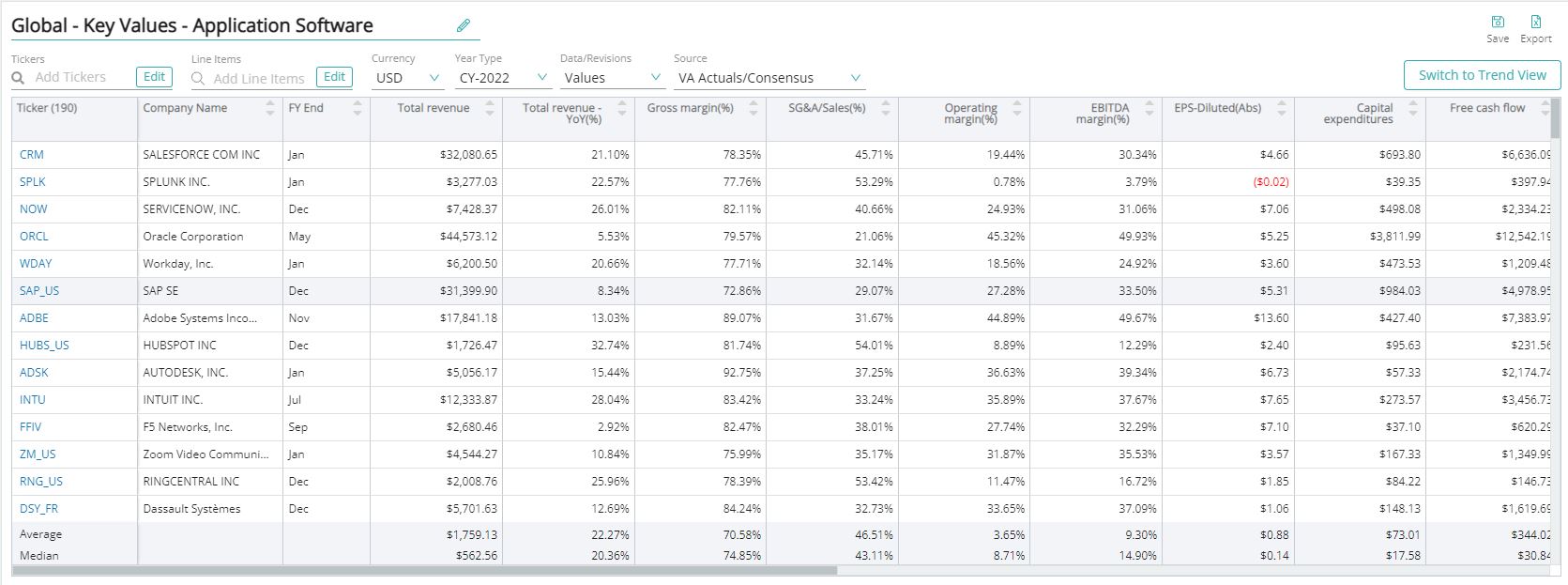Subscription total revenue consists of fees earned from subscription-based arrangements for giving customers the right to use the software.
Key performance indicators (KPIs) are the most important business metrics for a particular industry. When understanding market expectations for application software, whether at a company or industry level, some application software KPIs to consider include:
Visible Alpha’s Standardized Industry Metrics
To understand market expectations for the application software industry, a key information source is sell-side analyst estimates and consensus forecast data. The buy-side, sell-side, and public companies leverage this type of data to conduct competitive analysis, a type of analysis conducted by professional analysts that involves comparing standardized metrics of one company with those of similar companies. Because companies report metrics differently – and sometimes report on different metrics altogether – standardizing the key metrics for each company can be a cumbersome process.
Visible Alpha Insights includes analyst data, company data, and industry data at a level of granularity unparalleled in the market. Our industry data – Standardized Industry Metrics – enables market participants to quantify and compare market expectations for companies across 150+ industries.
Data as of January 2023
Application Software Industry KPI Terms & Definitions
Visible Alpha offers an innovative, integrated experience through real-time, granular consensus estimates and historical data created directly from the world’s leading equity analysts. Using a subset of the below KPIs, this data can help investors hone in on the key drivers of companies to uncover investment opportunities. Learn More >
Annual Recurring Revenue (ARR)
Annual recurring revenue (ARR) is a measure of predictable and recurring revenue such as subscriptions or maintenance expressed on a last twelve-month basis. It is the annualized value of all the contracts as of the end of the periods.
Net Revenue Retention Rate (%)
Net revenue retention rate is a metric that provides insight into a company’s ability to retain and expand revenue generated from its existing customer base through expanded use of software solutions, offset by customers who do not renew contracts. It is an indicator of the long-term value of customer relationships.
Remaining Performance Obligation (RPO)
Remaining performance obligations (RPO) represent contracted revenue that is yet to be recognized. It includes deferred revenue and non-cancelable funds that are to be invoiced and excludes performance obligations that are subject to cancellation terms and billed in arrears.
Current Remaining Performance Obligations (cRPO)
Current remaining performance obligations (cRPO) represent RPO that will be recognized as revenue in the next twelve months.
Booking
Bookings indicate the value of a contract signed with prospective customers for a given period.
Billings
Billings represent the total billed/invoiced value to a specific customer based on the contract length/term and booked value.
Subscription Total Revenue
Subscription total revenue consists of fees earned from subscription-based arrangements for giving customers the right to use the software.
Professional Services and Others Total Revenue
Professional services and others total revenue primarily include fees generated from the implementation services, cloud configuration, on-site support, other consulting services, training, and education services.
Deferred Revenue
Deferred revenue is the money for which a company has already billed, but cannot yet be recognized as revenue because the service is yet to be rendered.
Recurring Revenue
Recurring revenue comprises fees generated from the use of subscription-based solutions, license revenue from the sale of perpetual license products, and maintenance services for on-premises solutions.
Headcount (#)
Headcount represents the workforce or the number of people employed in a company.
Revenue Per Average Employee
Revenue per average employee represents the revenue generated per average headcount.
Clients (#)
Clients represent an entity with an active subscription contract as of the measurement date. A client is typically a parent company or, in a few cases, a significant subsidiary.
Revenue Per Client ($)
Revenue per client represents revenue generated per average client.
Download this guide as an ebook today:
Guide to Application Software KPIs for Investment Professionals
This guide highlights the key performance indicators for the application software industry and where investors should look to find an investment edge, including:
- Application Software Business Model & Diagram
- Key Application Software Metrics PLUS Visible Alpha’s Standardized Industry Metrics
- Available Comp Tables
- Industry KPI Terms & Definitions

